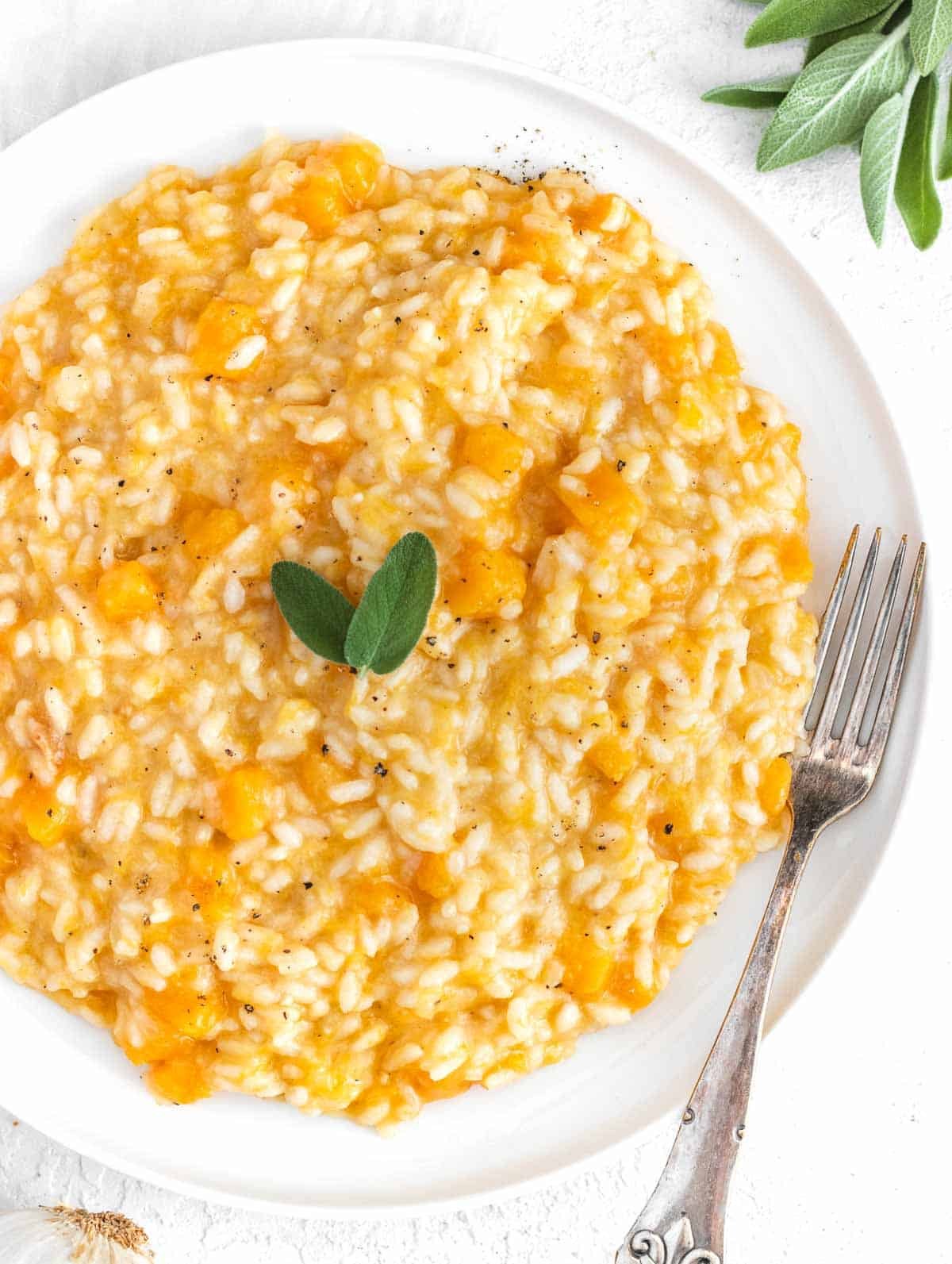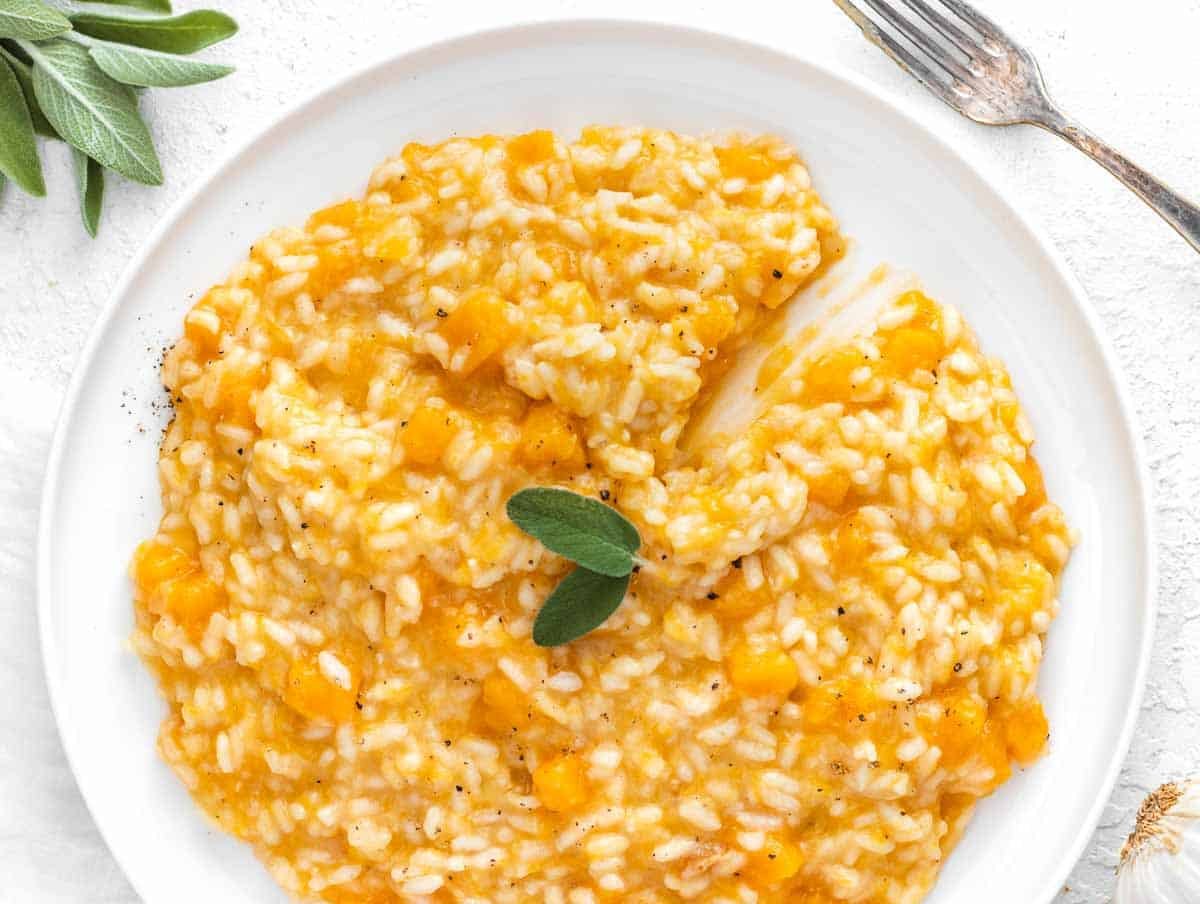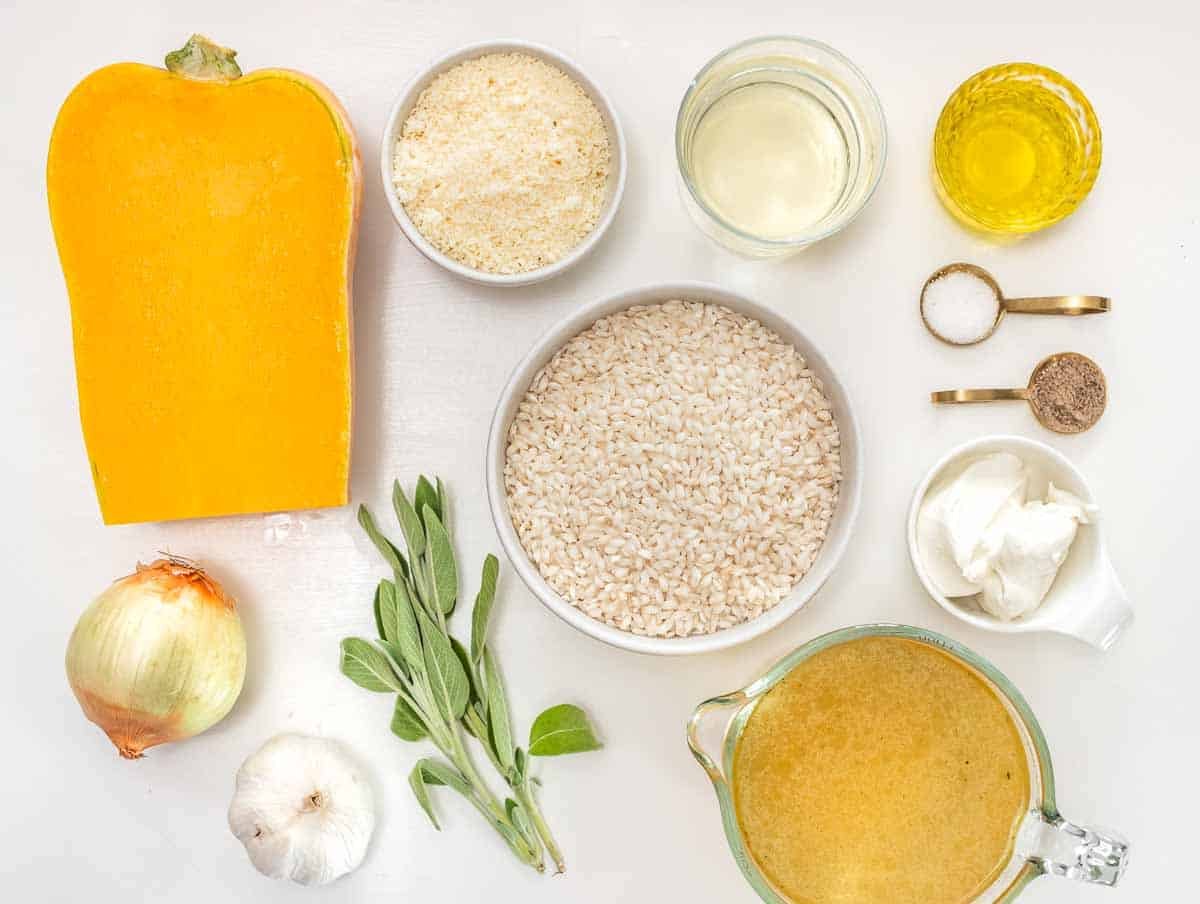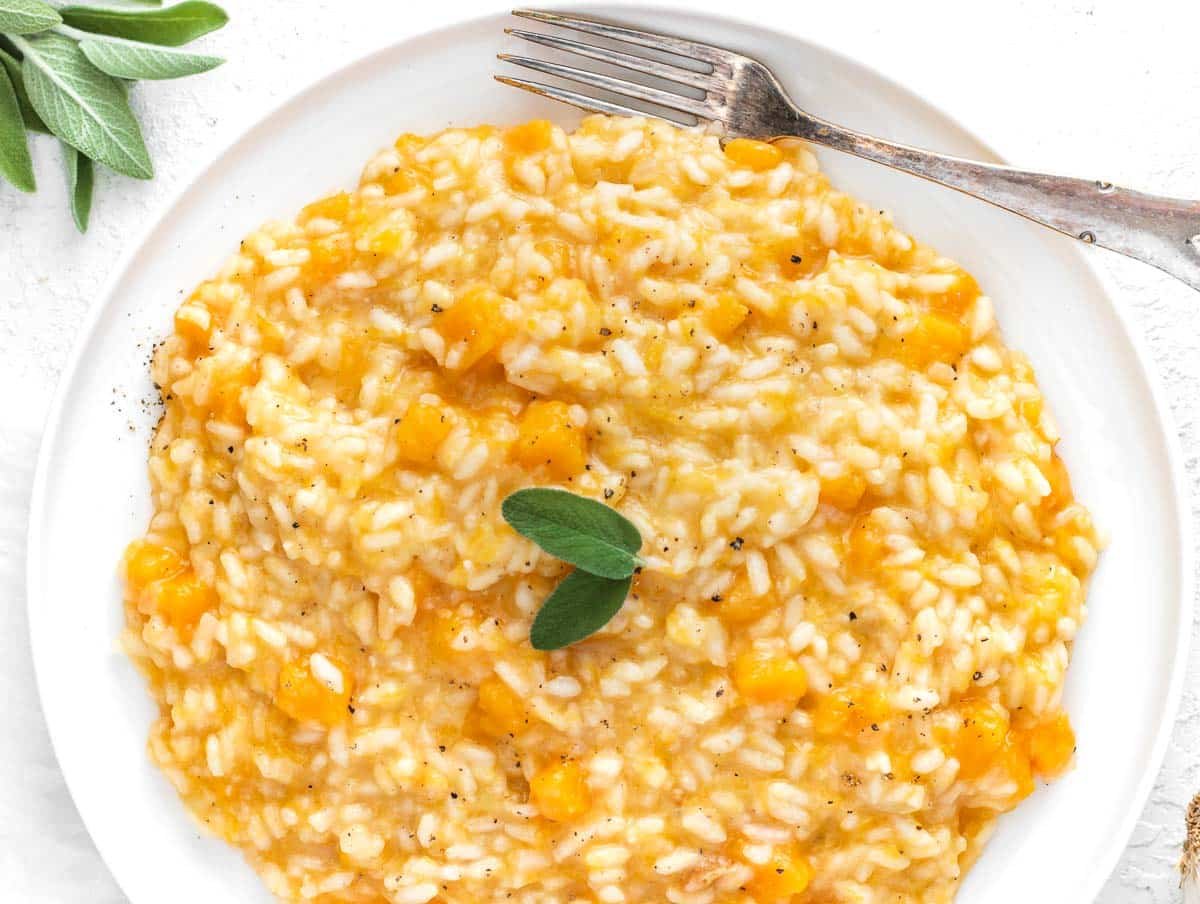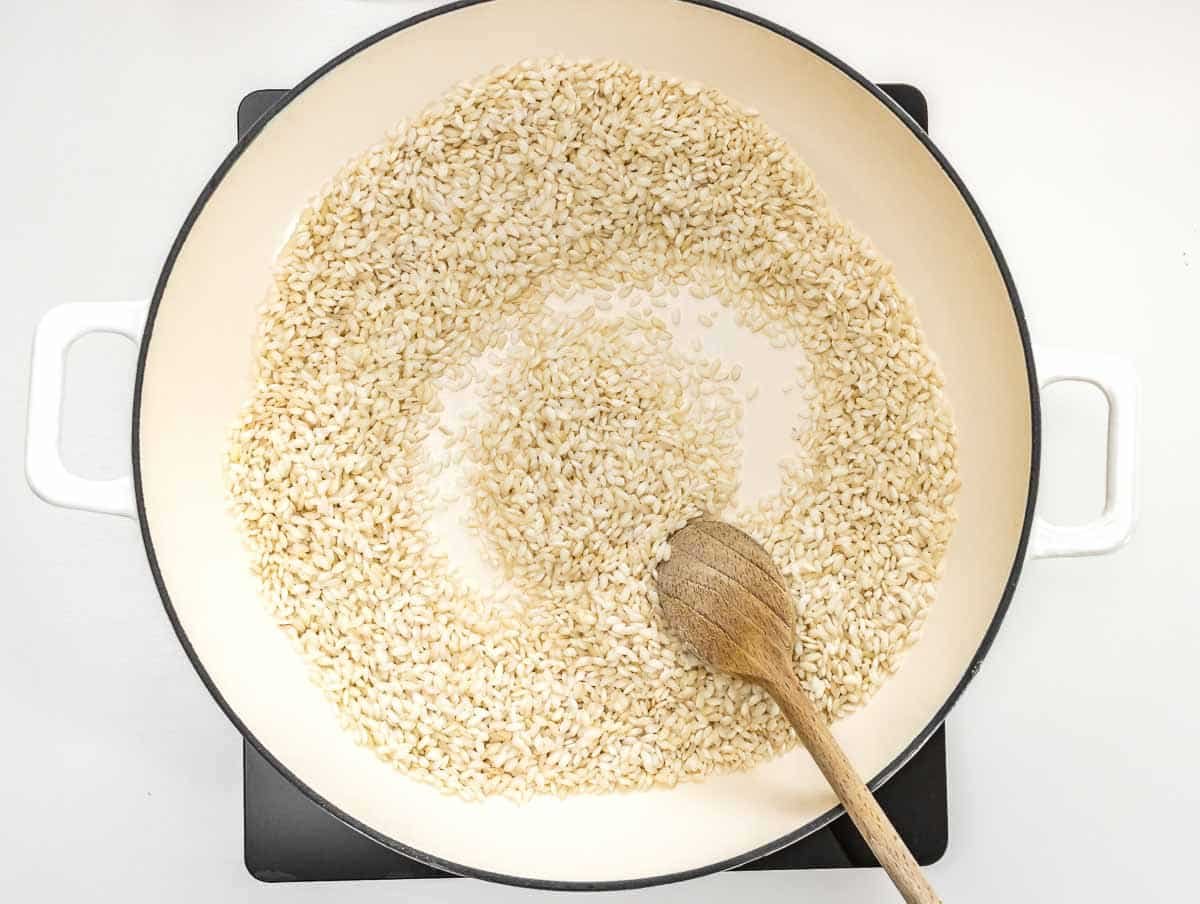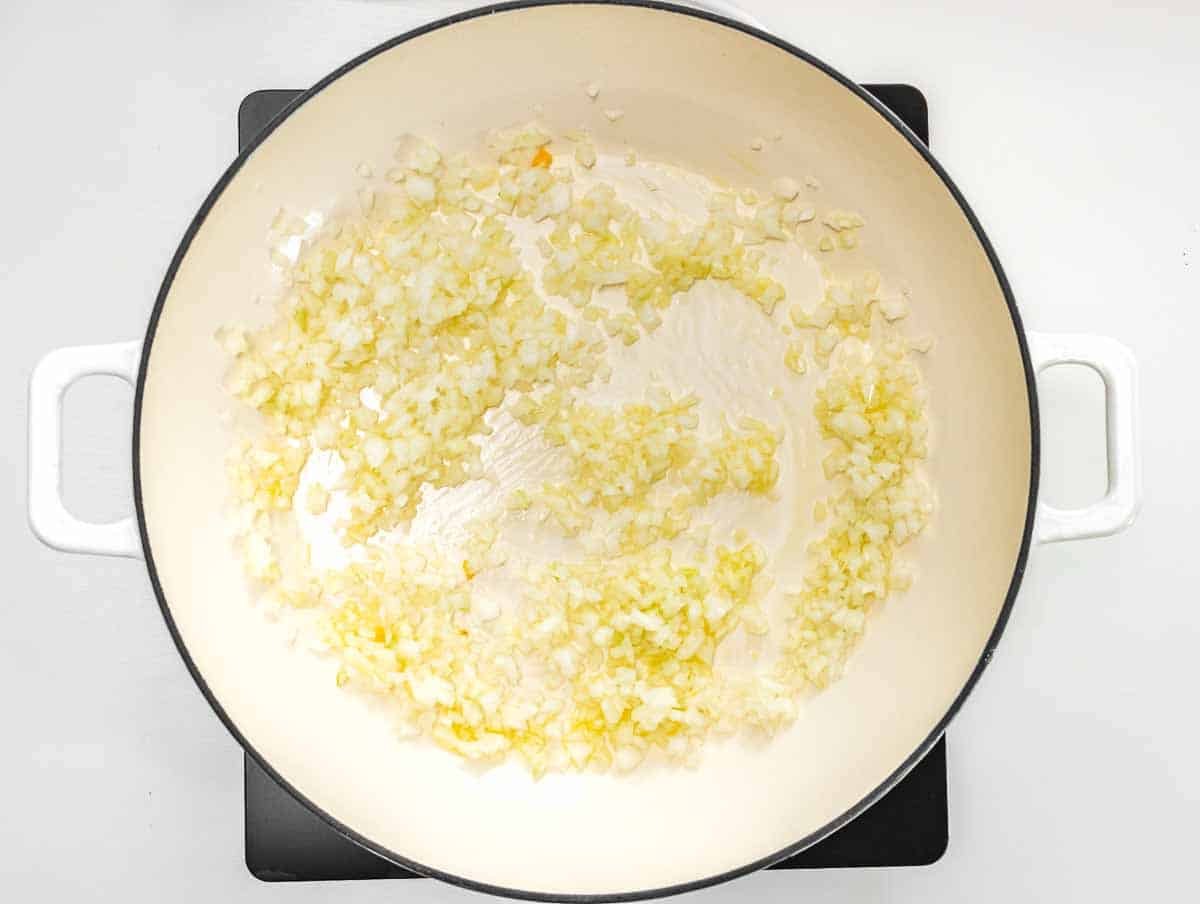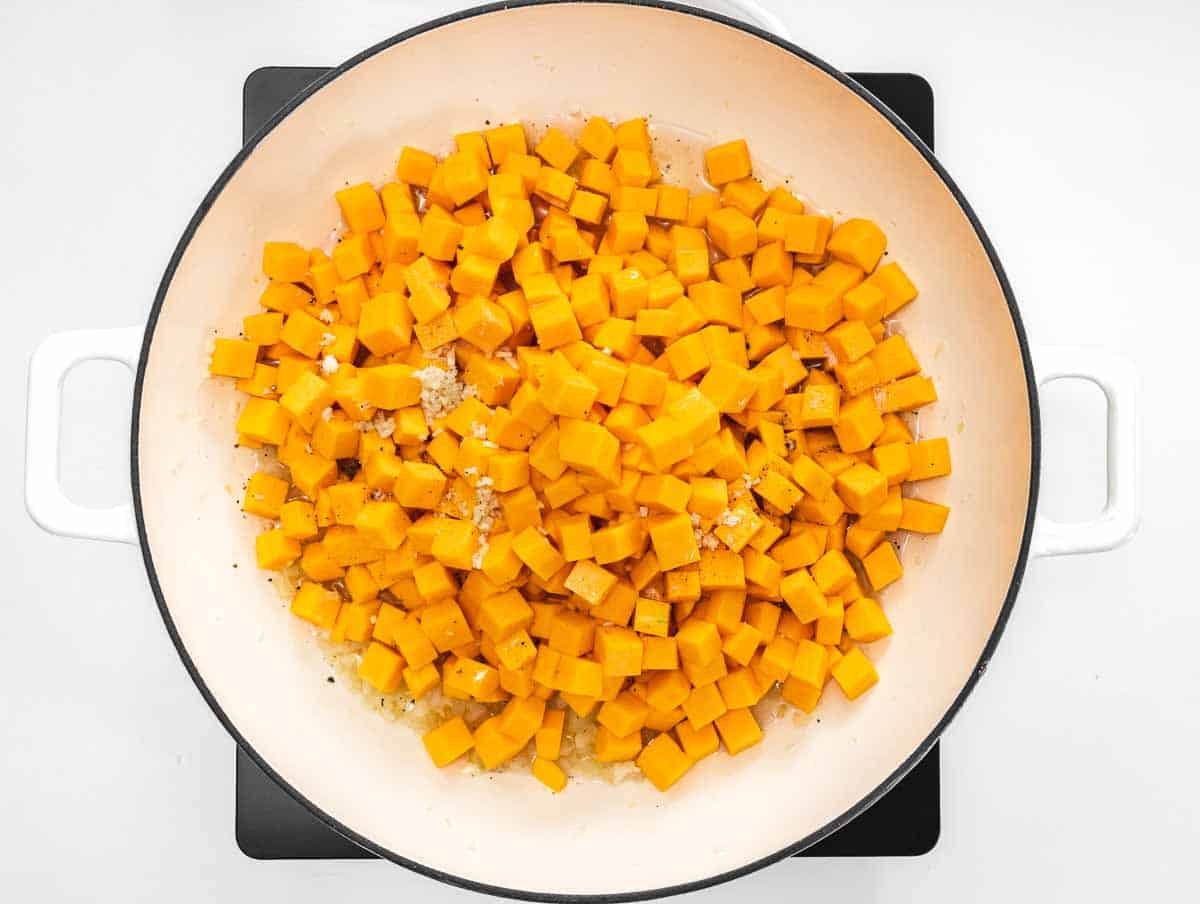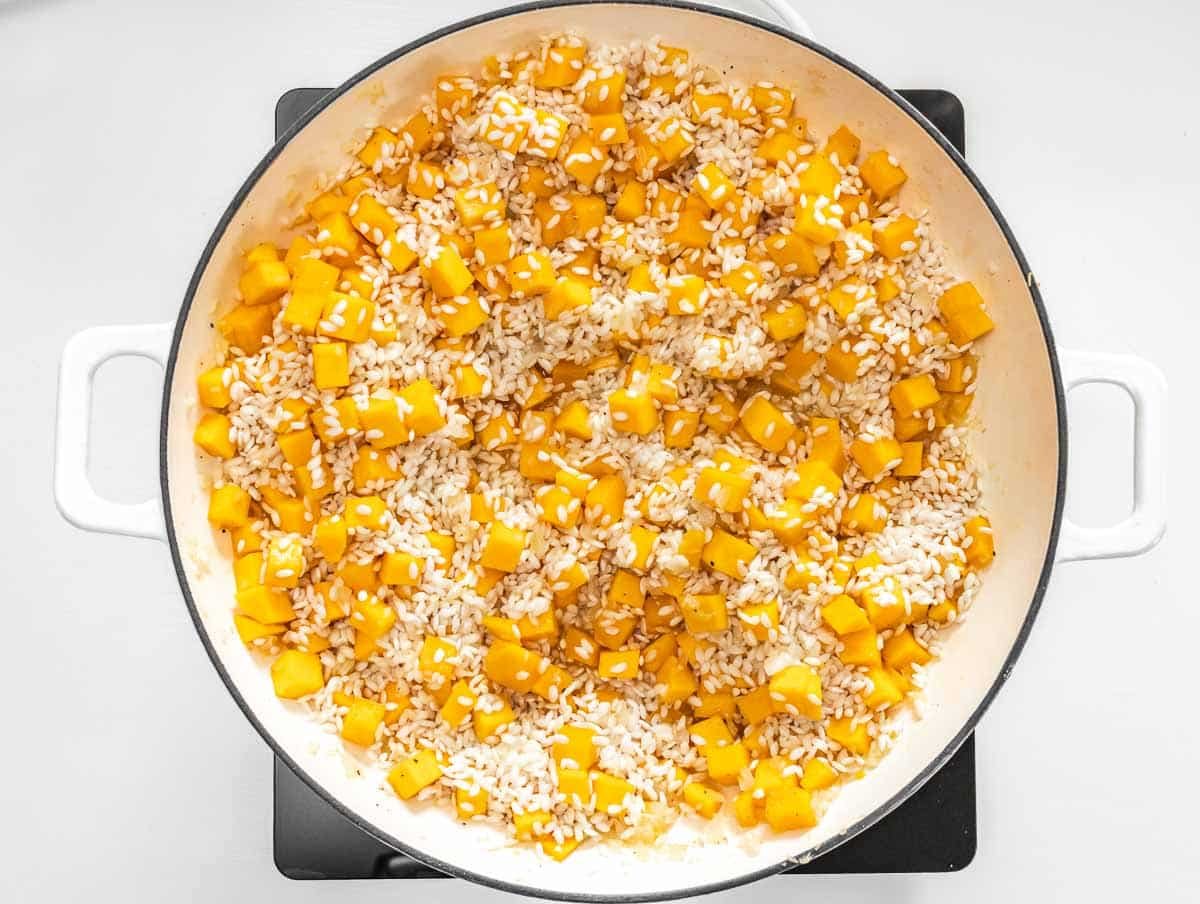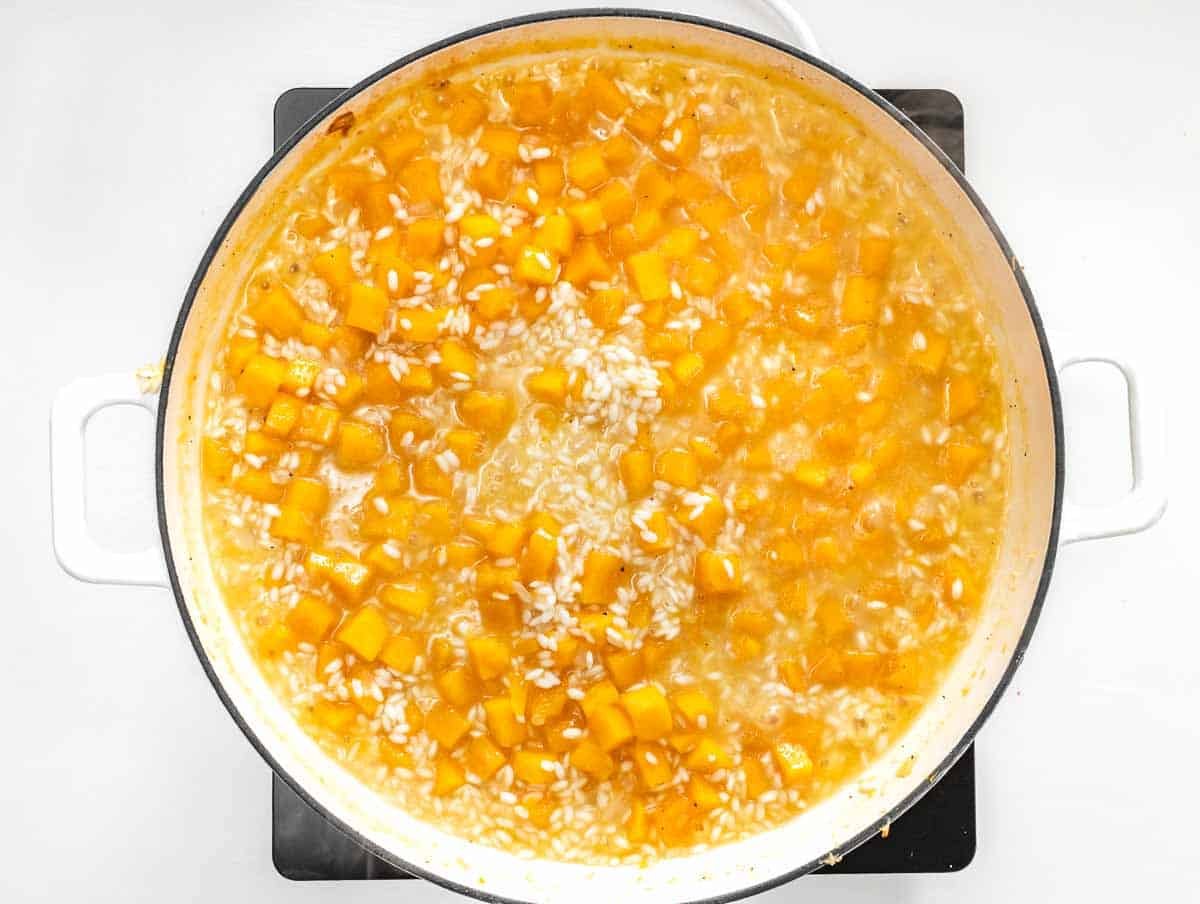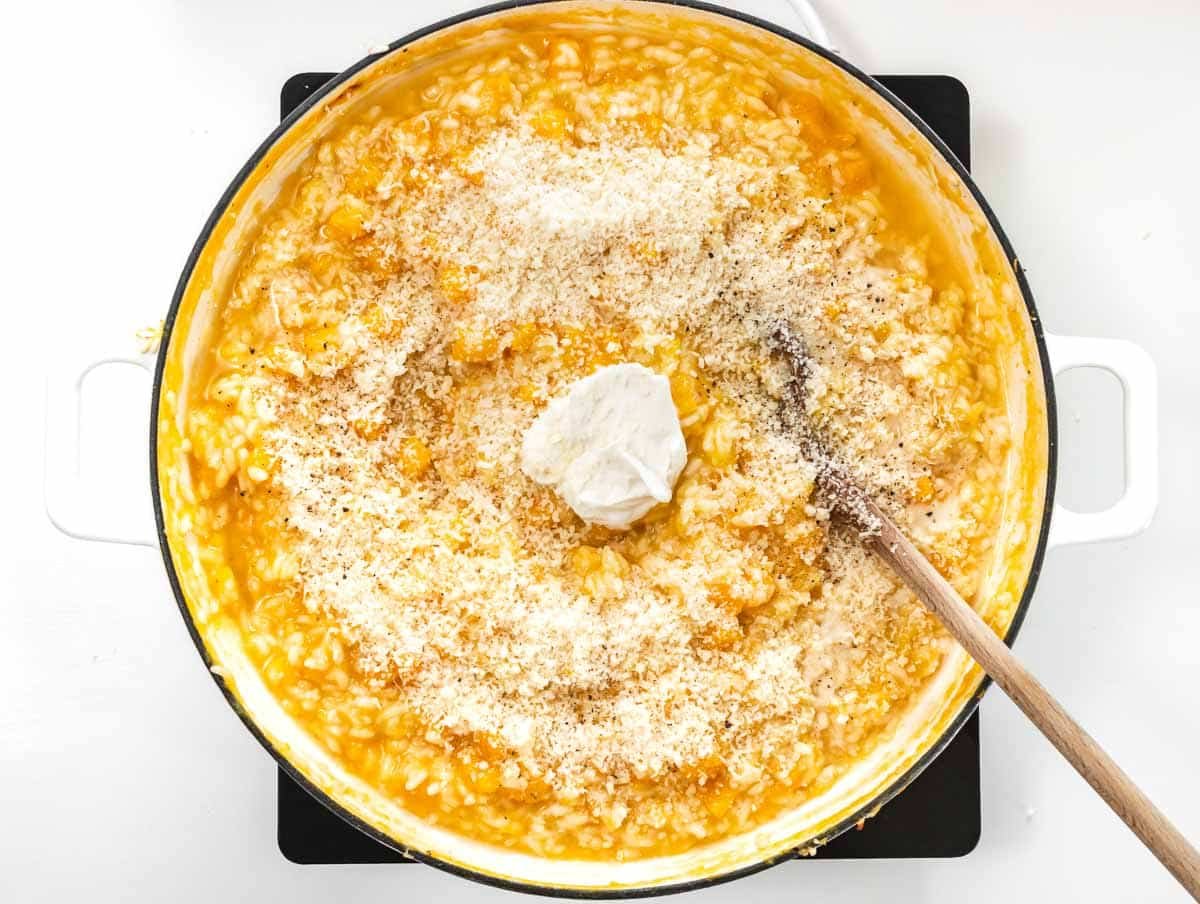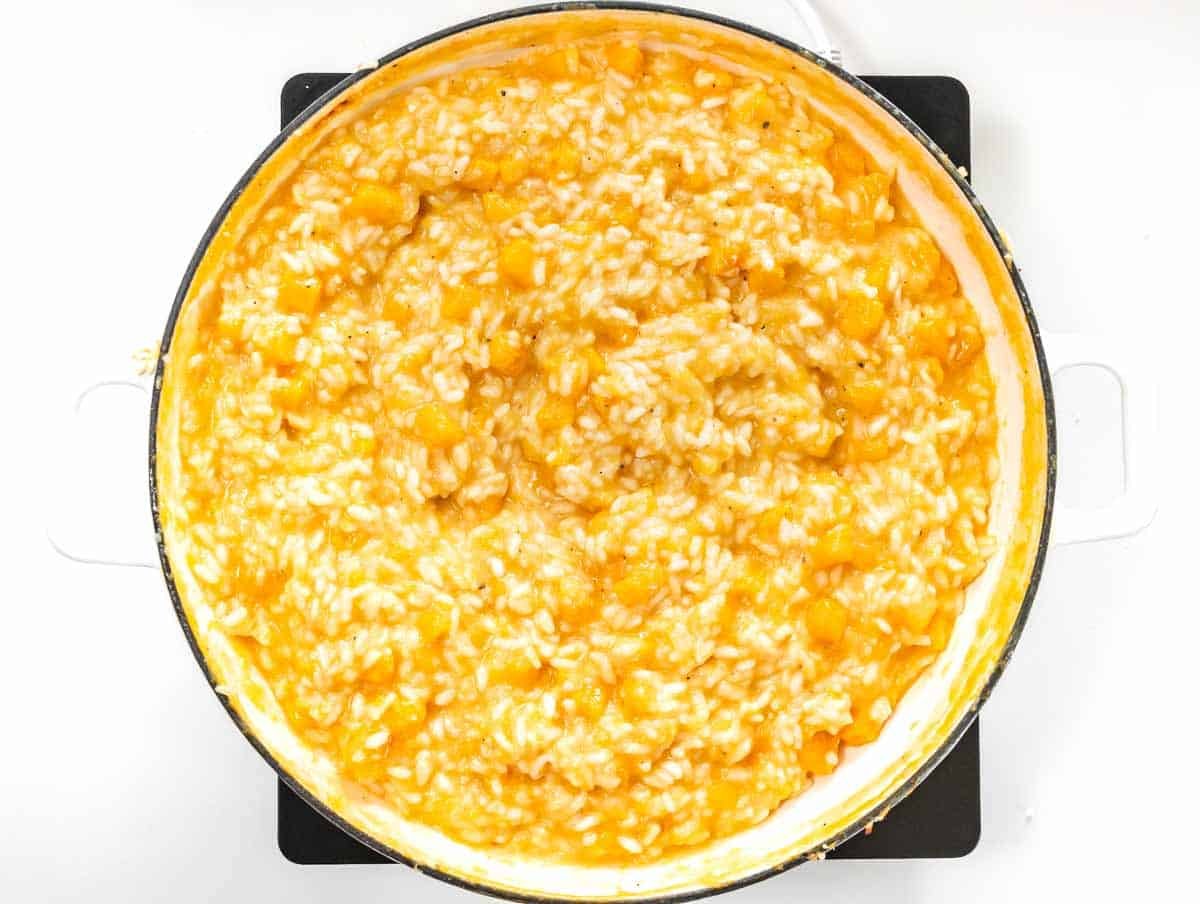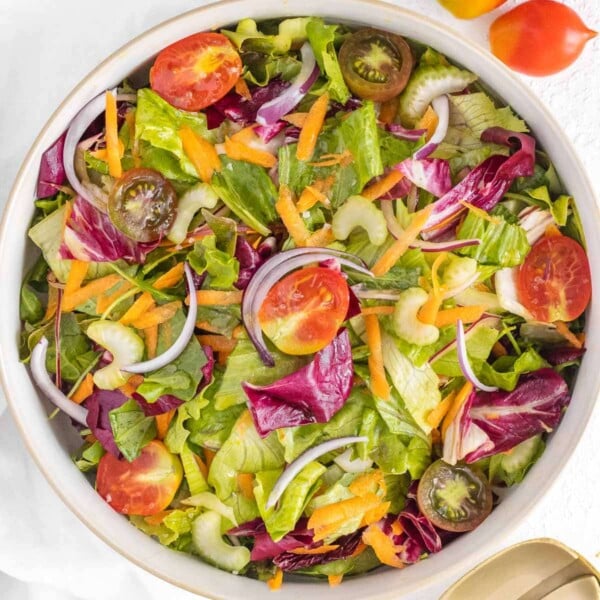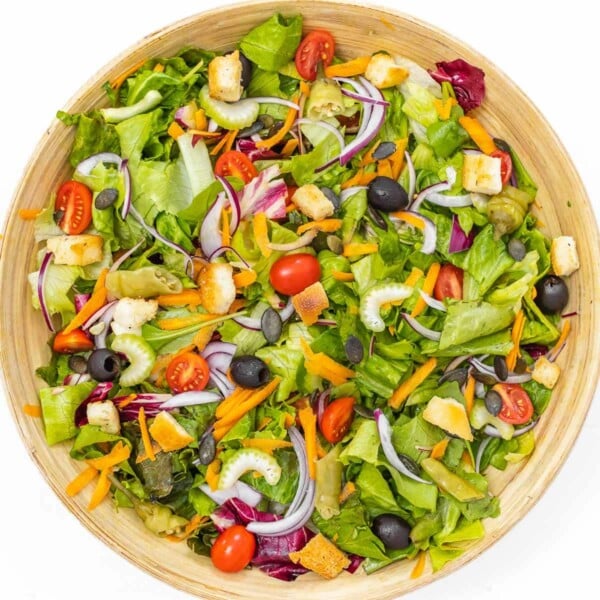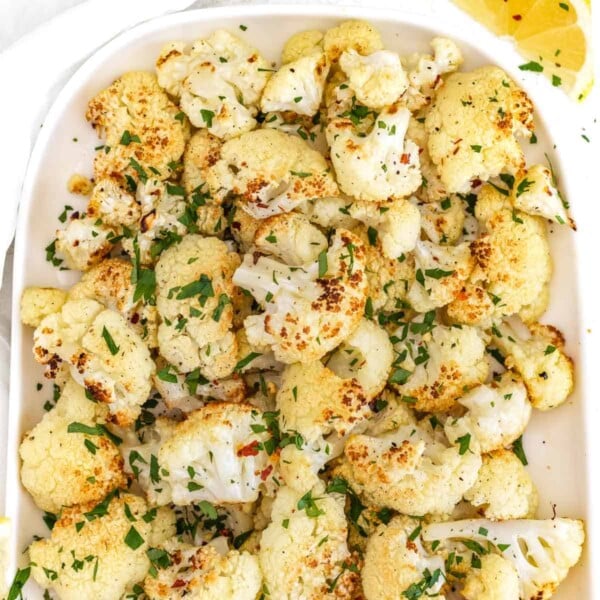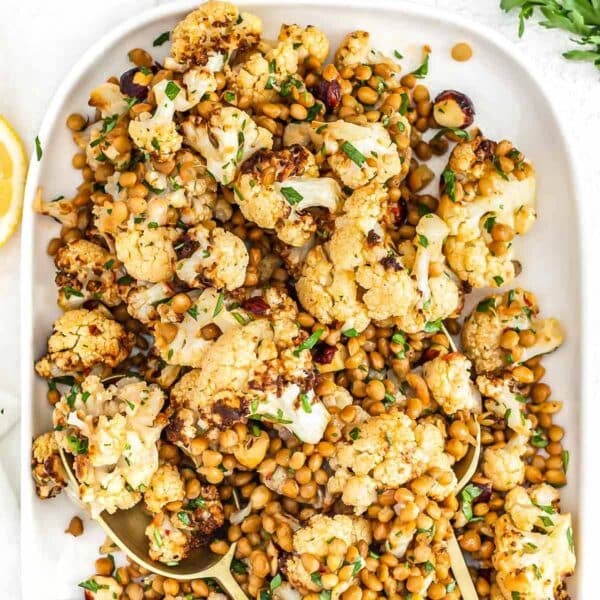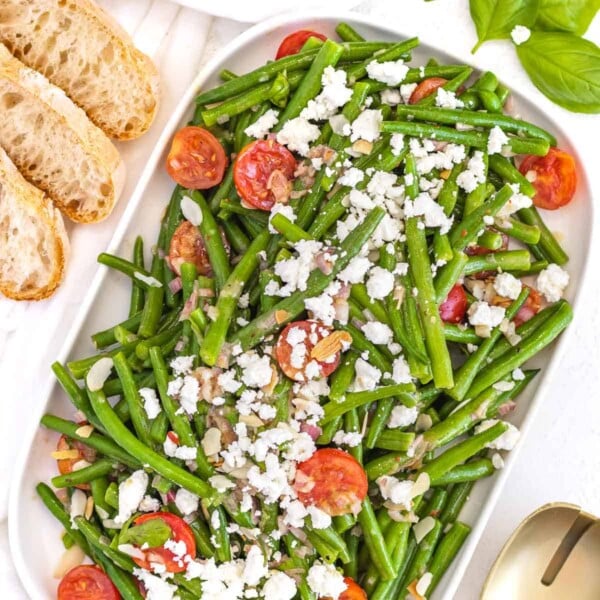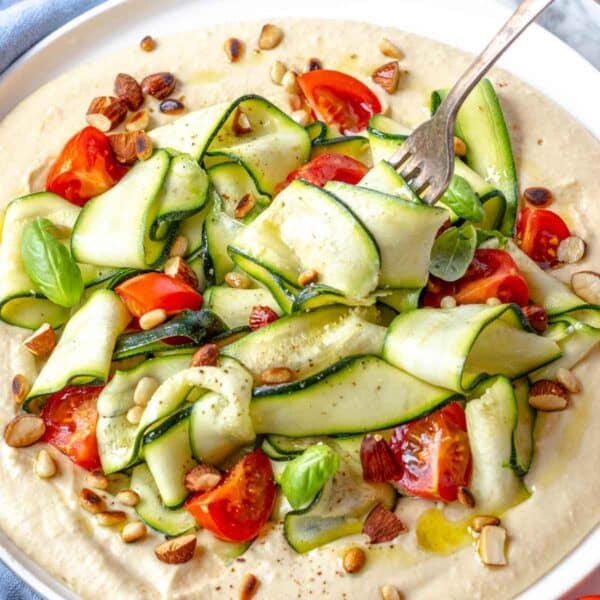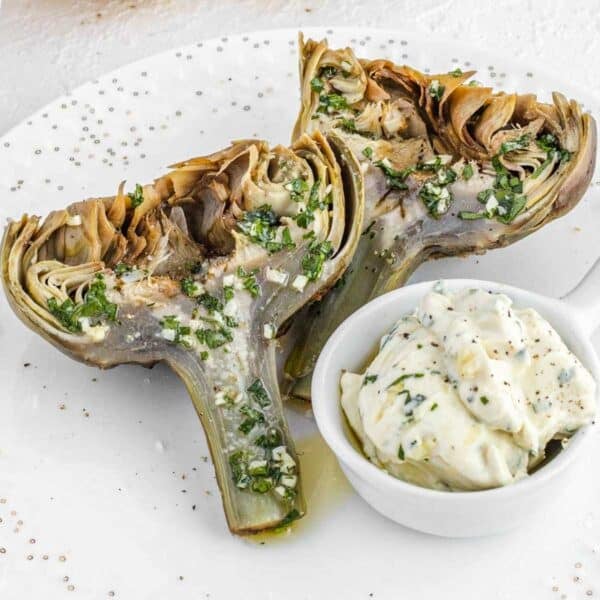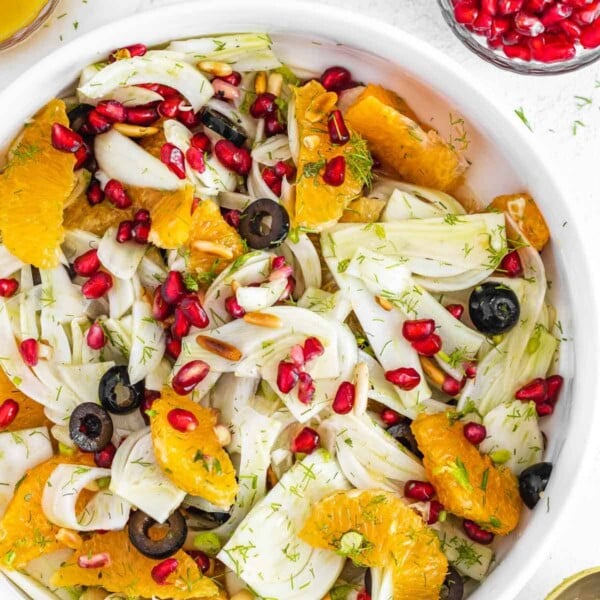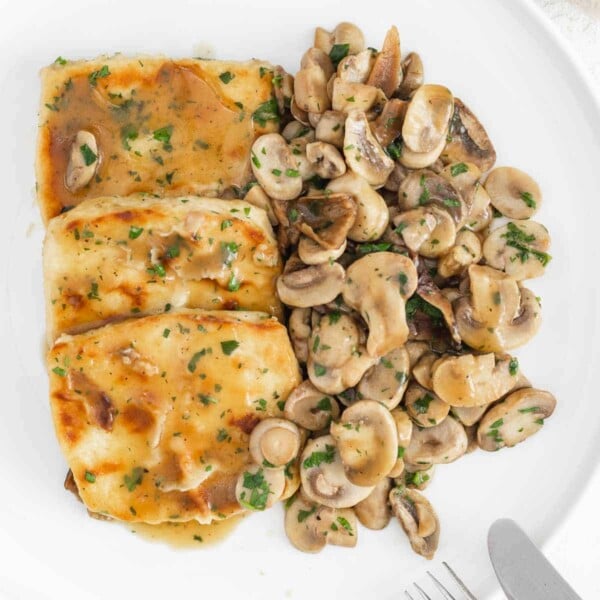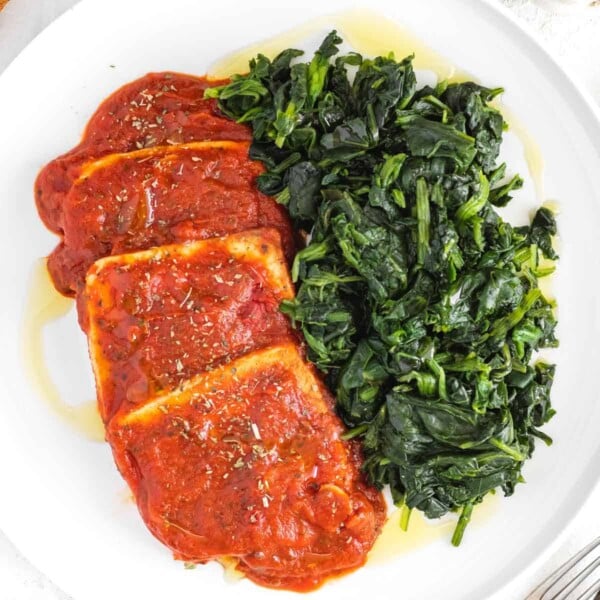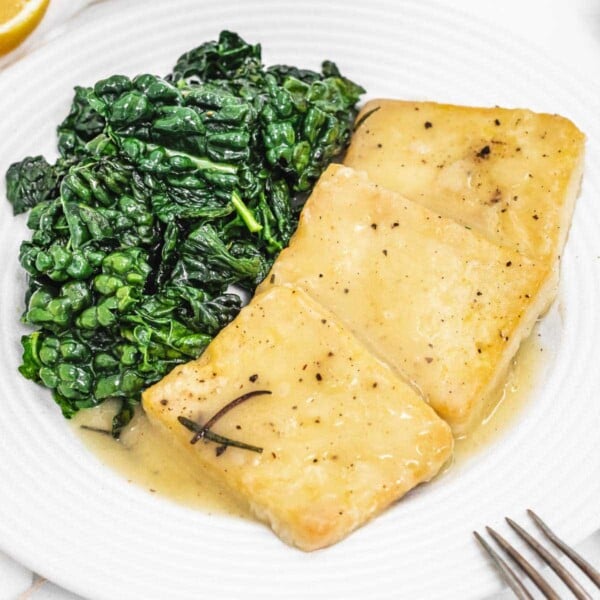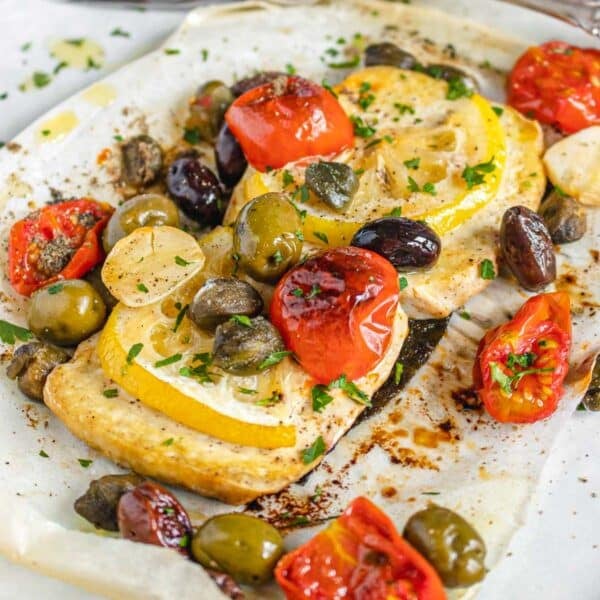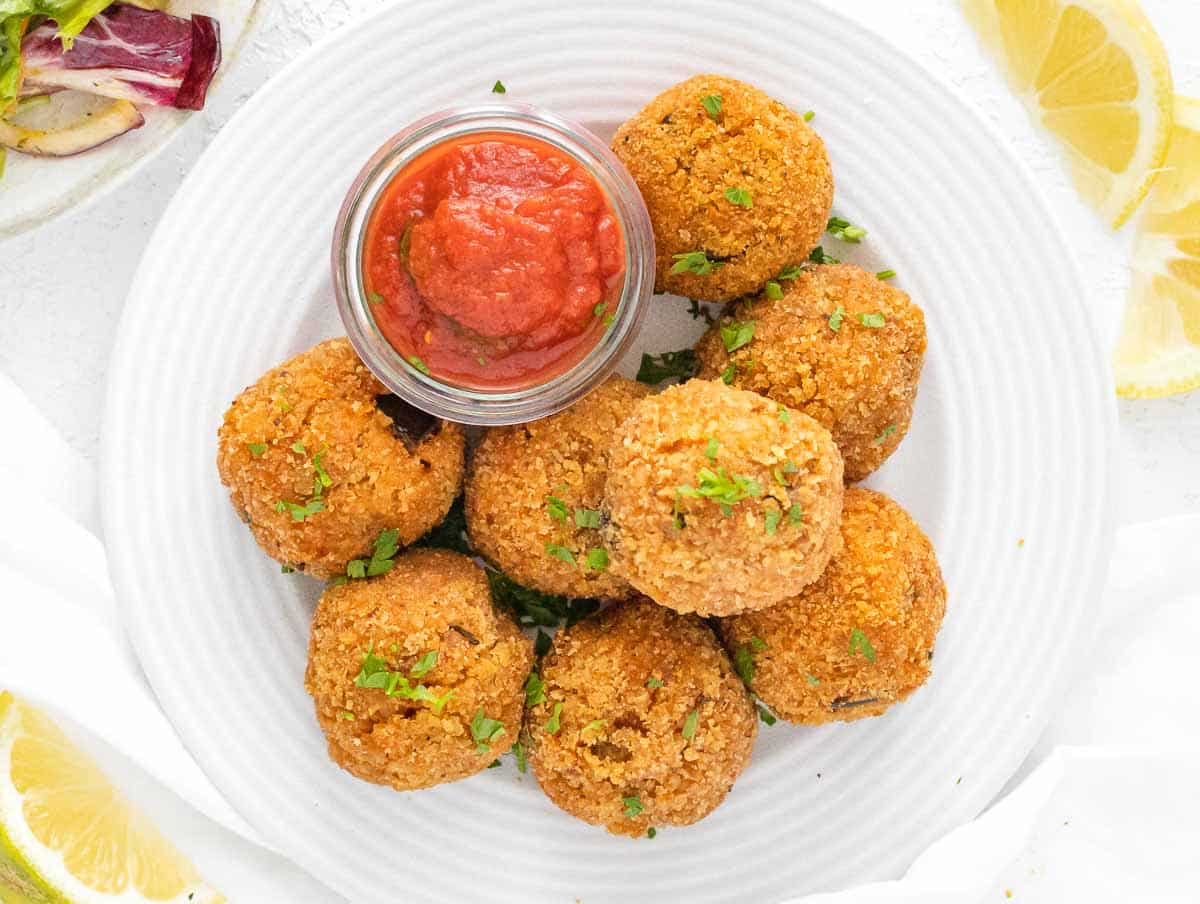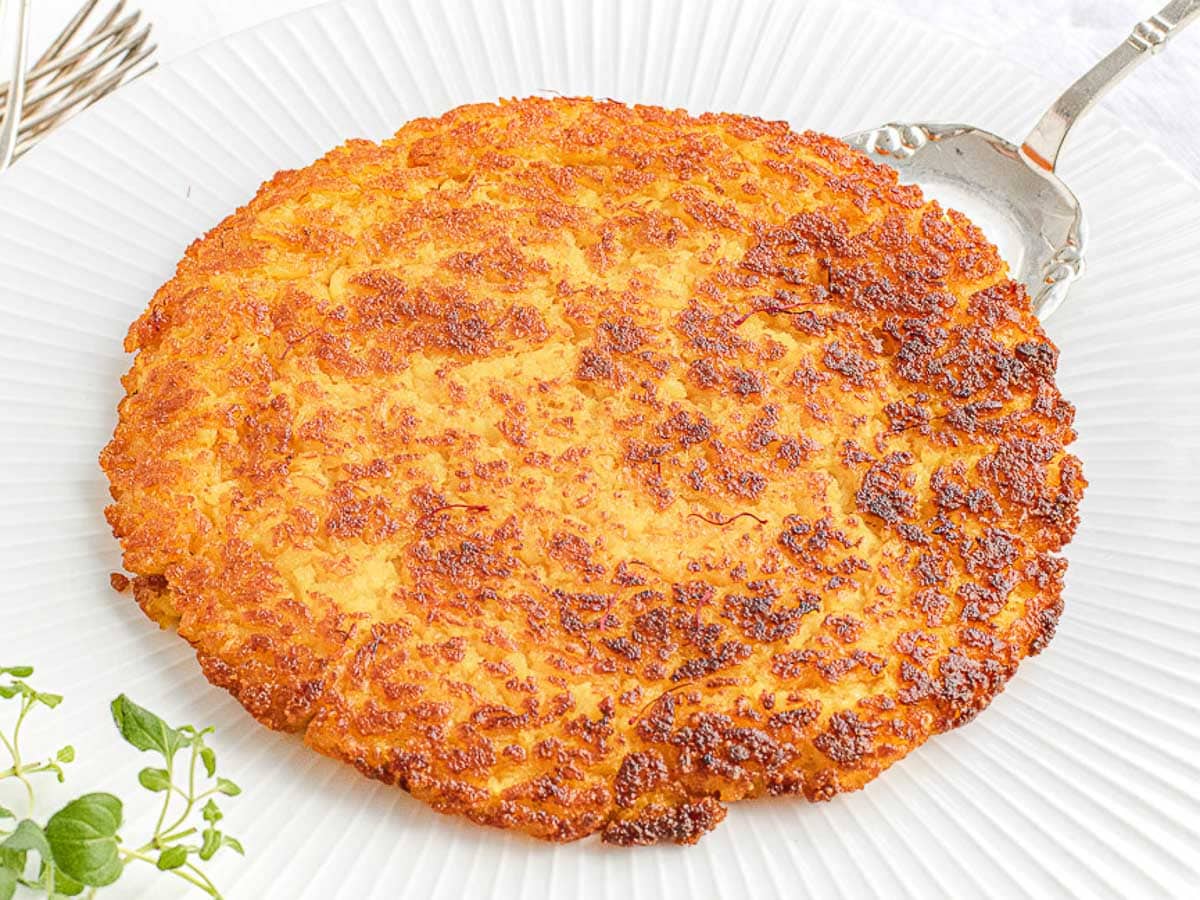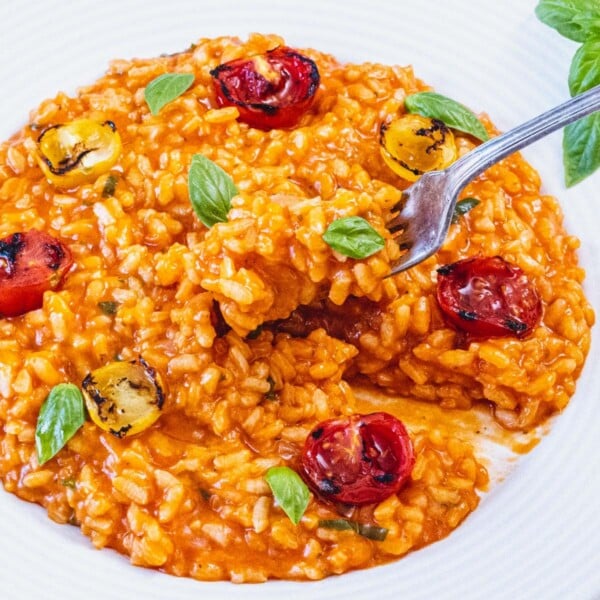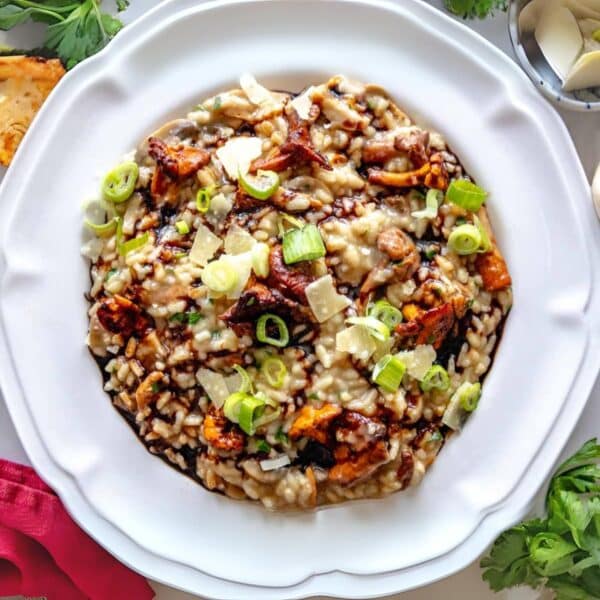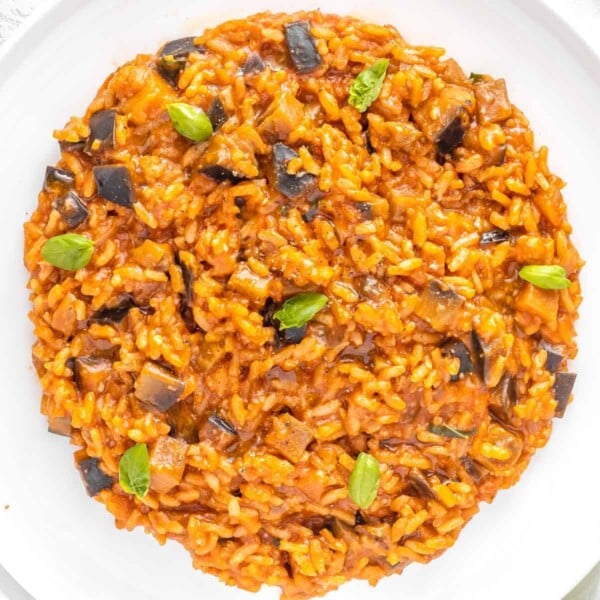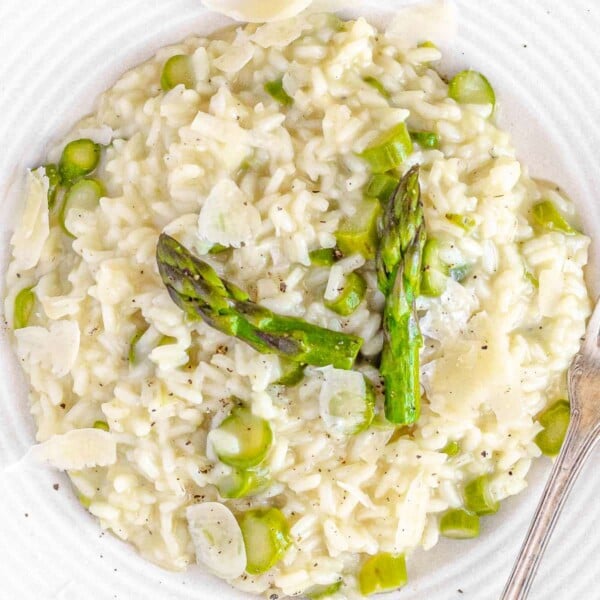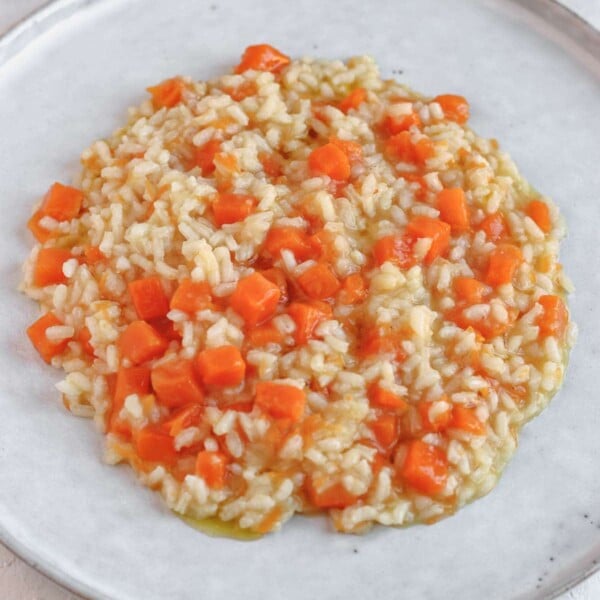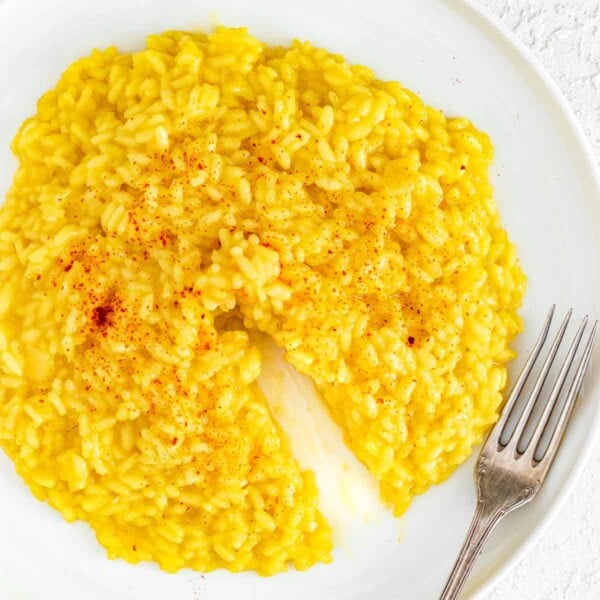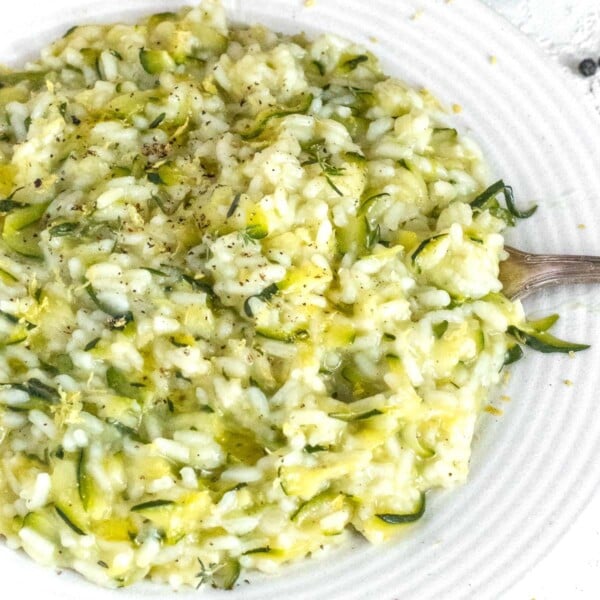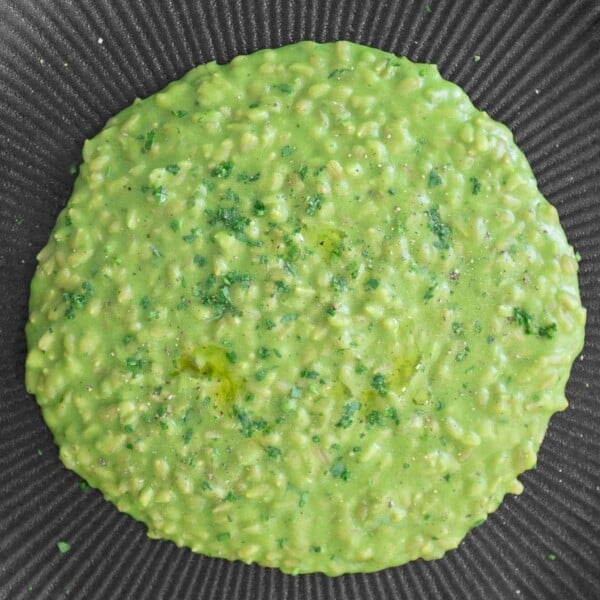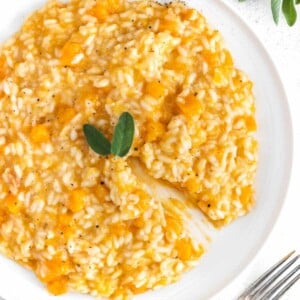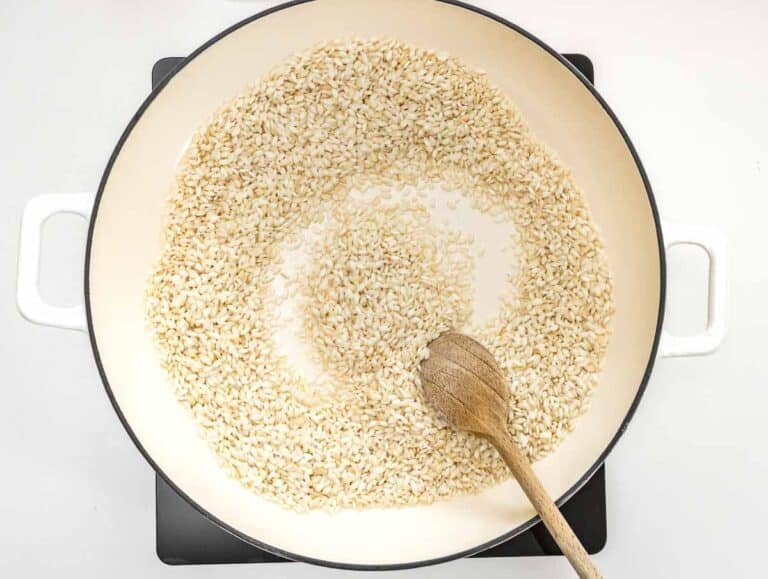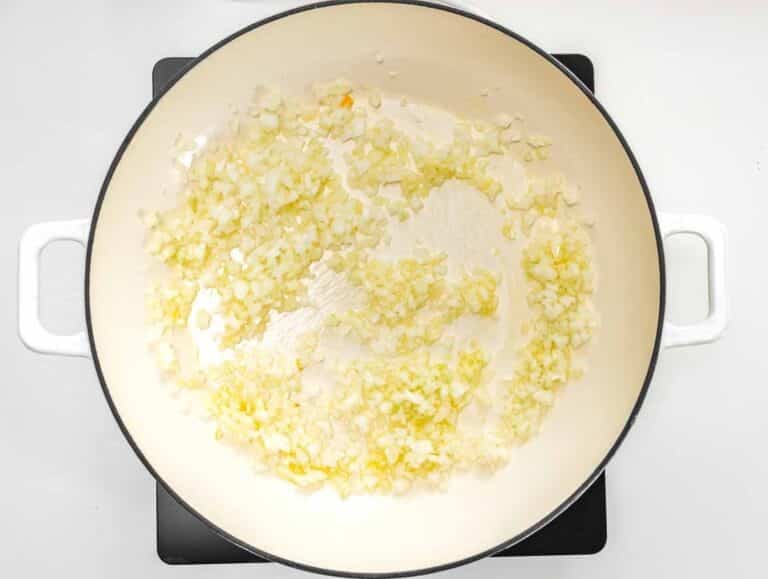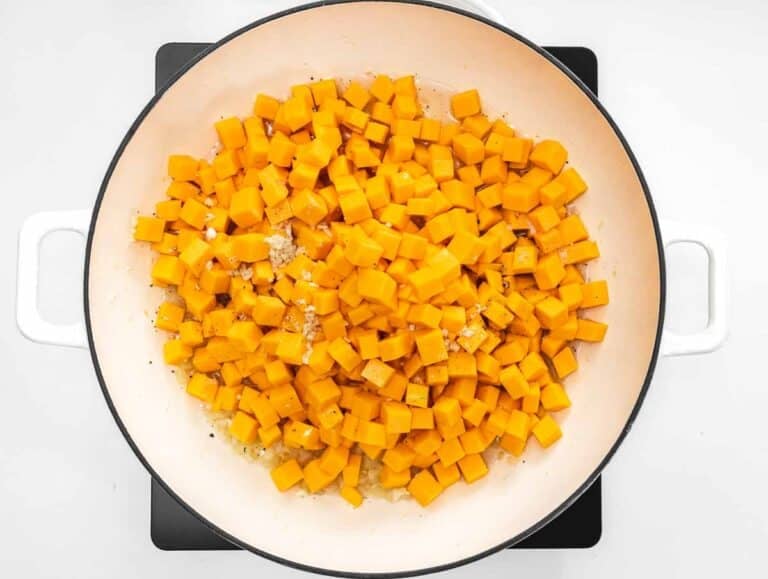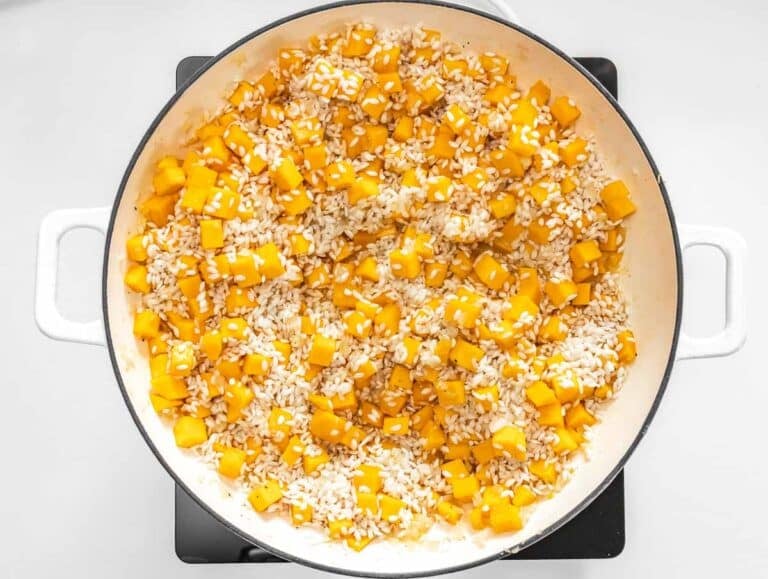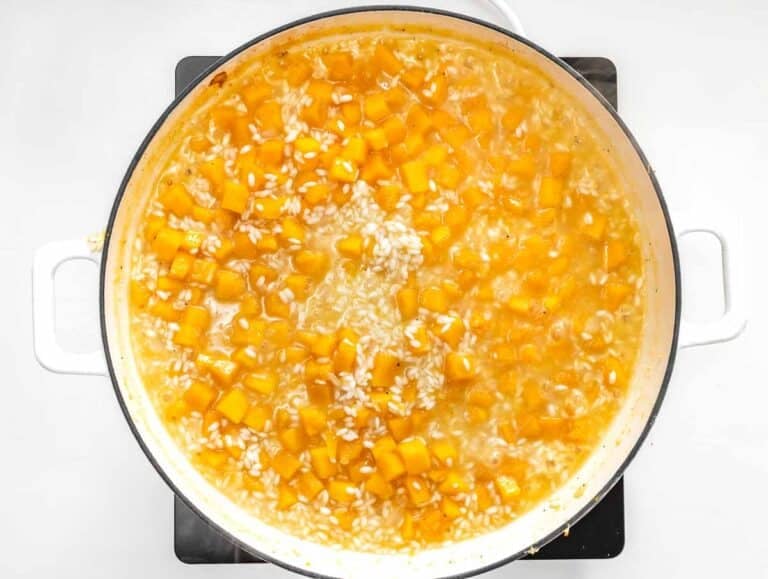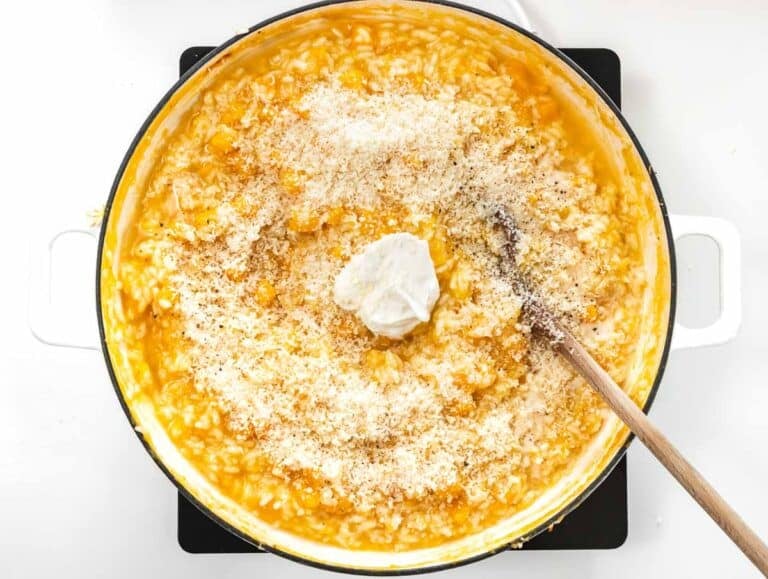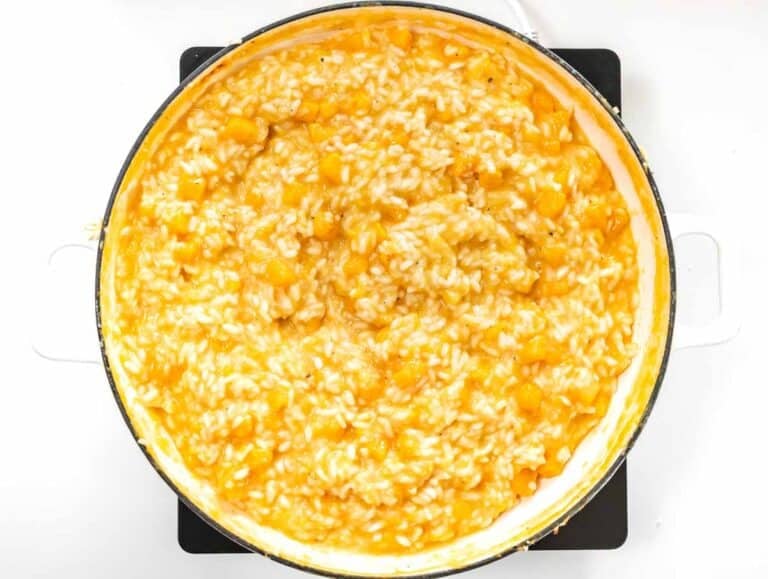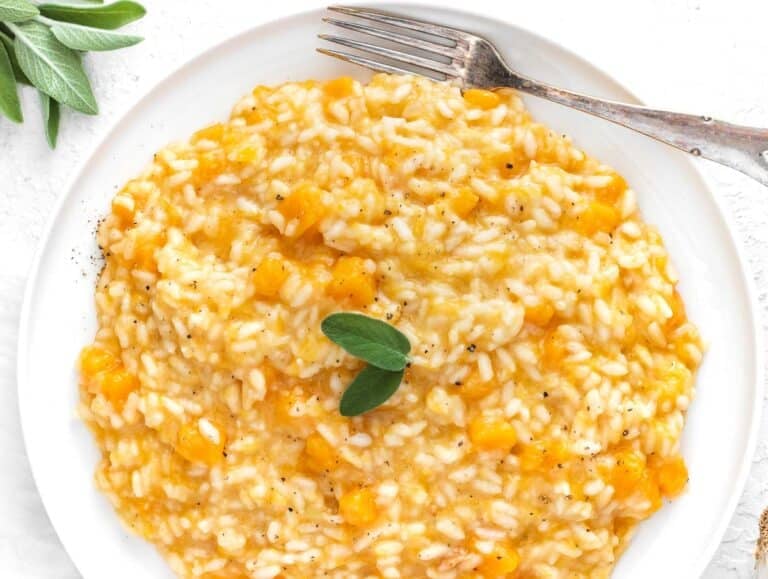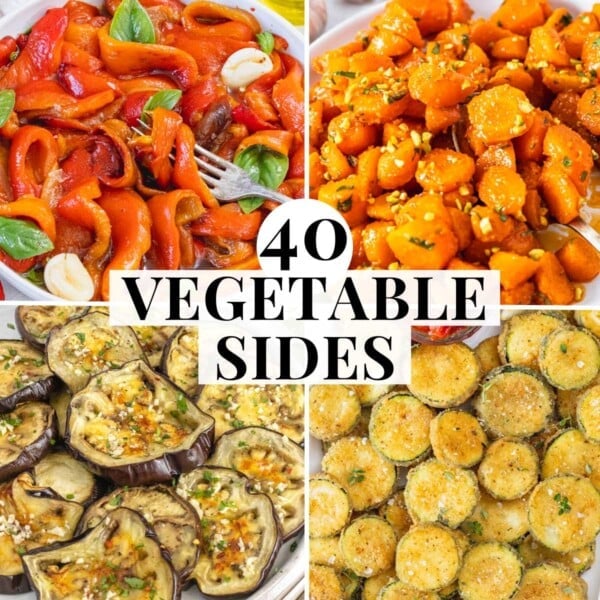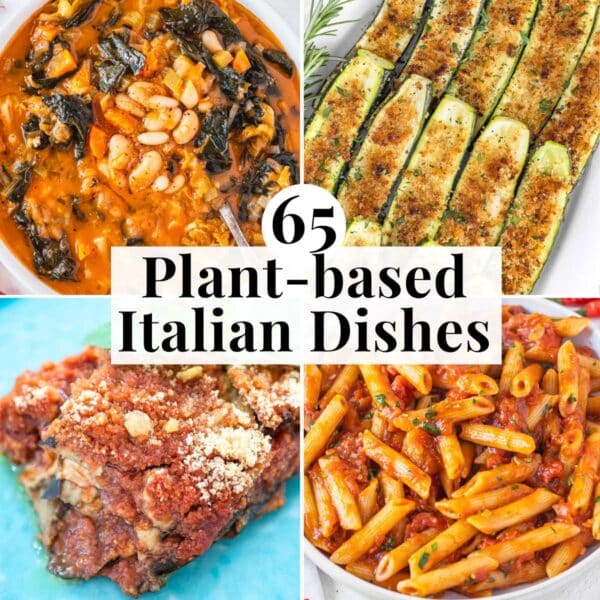You can make this recipe with or without dairy, it’s naturally gluten-free, and as usual, we’ll show you the simplest way to make it with step-by-step instructions. Butternut squash risotto is a fall-inspired recipe made with diced butternut squash cooked in one pot on the stovetop with vegetable broth and arborio rice.The recipe is creamy, rich, earthy, with sweet notes from the squash. It’s a perfect main dish for a cozy dinner with family and friends.While it’s true that you’ll need to stir almost constantly to allow the rice grains to rub against each other and slowly release the starch that makes this dish ultra-creamy, it’s also true that this recipe is simple to put together. And once the ingredients are in the pot, all you have to do is add the broth slowly and keep stirring while the rice and the squash simmer together. The gentle simmer and slow stirring ensure that the butternut squash gets tender, releasing its flavor, juices, and color into the rice. At the same time, the rice releases creamy starch that melds with the butternut squash juices. The result is a perfect symbiosis between the rice grains, the tender butternut squash dice, and an irresistible creamy coating that wraps them both.We finish this dish with parmesan cheese, butter, and fresh sage leaves to balance the sweetness of the squash, add umami, and a pleasant velvety mouth feel. You can, of course, make this recipe vegan by using dairy-free parmesan and butter.
Ingredients
Instructions
Serving suggestions
How to use leftover risotto?
Storage
More Risotto Recipes
If you can’t find any of these, then opt for rice that says “risotto rice” on the package. Risotto rice varieties differ from other types of rice in that they contain more starch. If cooked correctly, the starch will leach out of the rice grain, making the risotto ultra-creamy.
Butternut squash
You can use whole butternut squash, seed it, peel it and dice it into small cubes, or you can use pre-diced butternut squash. For this butternut squash risotto recipe, we prefer to chop the squash ourselves because the pre-diced one is generally cut too big. We also prefer to cook the squash with the rice in the same pot rather than roast the squash separately. You can substitute pumpkin, buttercup squash, hubbard squash, kabocha squash, or acorn squash for butternut squash.
Onion, garlic, and olive oil
We fry a white onion or shallot with a bit of extra virgin olive oil to make a quick flavor base. Later we add finely chopped garlic to add even more flavor.
White wine
Dry white wine is an important ingredient in most risotto preparations because it adds a touch of acidity, which means more flavor. If you don’t cook with wine, replace it with the same quantity of vegetable broth.
Vegetable broth
We use store-bought vegetable broth to speed things up; however, you can also make the broth yourself by boiling a carrot, an onion, and a celery stalk in water with a pinch of salt. We prefer vegetable broth to chicken broth to keep the recipe meat-free.
Sage
Fresh sage leaves are the “cherry on top” of this dish. Sage has an autumny flavor and goes well with most orange-colored veggies, including butternut squash. You can add a couple of leaves on top at the end, raw. Or you can fry the sage in a drizzle of olive oil to enhance its flavor, then add it on top of the butternut squash risotto.
Parmesan cheese
Parmesan cheese plus risotto plus butternut squash equals happy taste buds. However, you can easily replace the parmesan cheese with a vegan cheese substitute if you are vegan.
Butter
Unsalted butter is another crucial ingredient in most risotto. We generally use dairy-free butter in our risotto, but you can use any other butter you choose, as long as it’s not salted.
Salt and pepper
Use sea salt or kosher salt to season the butternut squash and plenty of freshly ground black pepper to add a peppery aroma. We also add extra black pepper on top before serving the risotto. Heat broth in a large saucepan until almost boiling temperature. Keep hot throughout the recipe.
Toast the rice
To a large dutch oven or skillet, add the risotto rice and stir on medium heat for about 1.5 minutes. Transfer the rice into a bowl and set it aside for later. Note: this step is called “toasting” the rice”. It’s important to ensure that the rice keeps its shape and bite once cooked. Toasting needs to be done in a dry pan; that’s why we need to do it before we add the butternut squash.
Cook the risotto
To the same dutch oven, add the olive oil and chopped onion. Fry gently for 2 minutes until the onion is translucent. Tip: if you want to make this oil-free, you can fry the onion in a dry dutch oven on low heat, moving it around the pan often. The onions will release natural oils that will prevent the onion from sticking. Add the diced butternut squash, minced garlic, 1/4 cup vegetable broth, salt, and pepper, and sauté on medium heat for 5 minutes. Add the toasted risotto rice and stir on medium-high heat. When the pan is hot and the rice starts to stick, add the white wine. Tip: this step is called deglazing and adds acidity to the dish, making it more flavorful. Stir until the wine has evaporated completely, then add two ladlefuls of vegetable broth and stir gently till the rice absorbs the broth. Keep adding two ladlefuls of liquid at a time while stirring almost continuously until the rice is cooked al dente (15 to 18 minutes). Taste the rice; it should be soft outside but still have a clear bite. The risotto should be creamy, but the rice grains perfectly separated and not mushy. Tip: there is no need to puree or blend the butternut squash with a food processor or blender. Some of the squash will naturally melt and color the rice without making it too soupy. Stir until butter and cheese melt in the rice. If the risotto gets too thick, add a little more vegetable broth. Tip: risotto should have a creamy texture and consistency that is not too thick nor too soupy. You should be able to eat it with a fork. Serve a ladleful or two of creamy butternut squash risotto per person, positioning it at the center of the plate and letting it spread out on its own. Top with a couple of leaves of sage and a twist of freshly ground black pepper. Tip: if you prefer, you can fry the sage in a tablespoon of extra virgin olive oil, on a nonstick pan, for one minute. We like to serve it with:
Simple side salad with fresh crunchy leavesItalian salad with oregano dressingRoasted cauliflower or air-fried cauliflowerCauliflower lentil saladGreen bean salad with creamy mustard dressingLight and fresh zucchini saladSteamed artichokes or braised artichokesFennel and orange salad
Side Salad
Italian Salad
Roasted Cauliflower
Cauliflower Lentil Salad
Green Bean Salad
Zucchini Salad
Steamed Artichokes
Fennel and Orange Salad
Tofu with mushroomsEasy tofu with lemon sauceBaked vegan fishTofu pizzaiola with oregano and garlic
Tofu Mushroom Recipe
Tofu with Pizzaiola Sauce
Lemon Tofu
Vegan Fish
Risotto cakes
Crispy risotto cakes are a tasty and fulfilling main dish you can make with leftover risotto and a few other simple ingredients. We coat them in breadcrumbs, pan-fry or air-fry until perfectly golden brown and crisp, and serve them on a simple side salad with a homemade marinara sauce. Check out our risotto cakes recipe.
Italian rice balls
Italian rice balls are an irresistible recipe made with leftover or cooled-down risotto of any kind coated in crunchy breadcrumbs and fried until perfectly crisp and golden brown. Check out our Italian rice balls recipe. Check out our Supplì alla Romana recipe.
Italian fried rice
Italian fried rice (riso al salto in Italian) is the cinderella of Italian dishes. Made with leftover risotto, Italian fried rice was born in a famous Milan restaurant (Ristorante Savini) in the 70s, and it’s now a gourmet dish. Check out our Italian fried rice recipe. We don’t recommend freezing butternut squash risotto.
Questions
Tomato risottoMushroom risottoZucchini risottoEggplant risottoEasy vegan risottoSaffron risottoAsparagus risottoPeas and oat risotto
Tomato Risotto
Mushroom Risotto
Eggplant Risotto
Asparagus Risotto
Easy vegan risotto
Saffron Risotto
Zucchini Risotto
Oat Risotto With Peas
What to Serve with Risotto: 25 Sides
40 Best Vegetable Sides
25 Easy Eggplant Recipes
65 Plant-Based Italian Recipes
